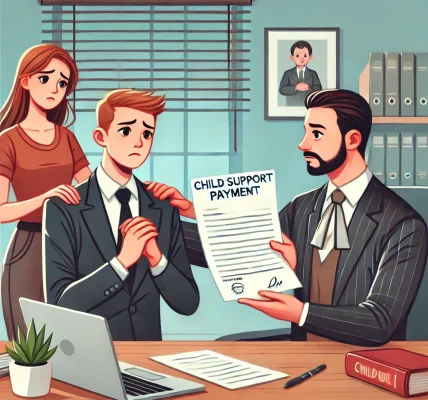Child custody is a critical legal issue that arises when parents separate or divorce. Understanding child custody laws is essential for parents to ensure the well-being of their children and make informed decisions. This comprehensive guide explains the different types of custody, legal factors considered by courts, and tips for navigating the custody process.
1. What Is Child Custody?
Child custody refers to the legal rights and responsibilities of parents regarding their child’s care and upbringing. It includes decisions about the child’s education, healthcare, and overall welfare. Custody is typically determined by the court based on the child’s best interests.
2. Types of Child Custody
A. Legal Custody
Legal custody grants a parent the authority to make major decisions regarding the child’s life, including education, healthcare, and religious upbringing.
- Sole Legal Custody: Only one parent has the decision-making authority.
- Joint Legal Custody: Both parents share decision-making responsibilities.
B. Physical Custody
Physical custody determines where the child lives and who is responsible for their day-to-day care.
- Sole Physical Custody: The child primarily lives with one parent, while the other may have visitation rights.
- Joint Physical Custody: The child spends substantial time with both parents.
C. Sole vs. Joint Custody
- Sole Custody: One parent has full legal and/or physical custody, and the other parent may have limited rights.
- Joint Custody: Both parents share custody responsibilities, ensuring continued involvement in the child’s life.
3. Factors Courts Consider in Child Custody Cases
Family courts prioritize the child’s best interests when making custody decisions. The following factors influence custody rulings:
- Child’s Age and Needs: Younger children may need more stability and primary caregiving, while older children’s preferences may be considered.
- Parental Fitness: Each parent’s mental, emotional, and physical ability to care for the child.
- Child’s Relationship with Each Parent: The bond between the child and each parent is crucial.
- Parental Cooperation: Courts favor parents who can communicate effectively and co-parent amicably.
- Stability and Living Arrangements: The court assesses the home environment and stability each parent can provide.
- History of Abuse or Neglect: Any history of domestic violence, substance abuse, or neglect impacts custody decisions.
4. Child Custody Agreements and Modifications
A. Creating a Custody Agreement
Parents can create a custody agreement outlining:
- Custody type (sole/joint)
- Visitation schedules
- Holiday arrangements
- Decision-making responsibilities
B. Modifying Custody Orders
Custody orders can be modified if there is a significant change in circumstances, such as:
- Relocation of a parent
- Change in the child’s needs
- Evidence of neglect or abuse
5. The Role of Mediation in Child Custody Disputes
Mediation helps parents resolve custody issues outside of court by working with a neutral third party. It promotes:
- Cooperative decision-making
- Less emotional stress for the child
- Faster and cost-effective resolution
6. Parental Rights and Responsibilities
Parents have legal rights and obligations, including:
- Right to spend time with the child
- Responsibility to provide financial support
- Right to participate in major life decisions
- Obligation to create a safe and stable environment
7. Tips for Parents Navigating Child Custody
- Put the Child First: Focus on what is best for the child rather than personal disputes.
- Maintain Open Communication: Effective communication between co-parents benefits the child.
- Follow Court Orders: Adhering to custody agreements prevents legal complications.
- Document Everything: Keep records of communication, agreements, and any incidents related to custody.
- Seek Legal Advice: Consulting a family lawyer ensures that parental rights are protected.
8. Conclusion
Understanding child custody laws empowers parents to make informed decisions that prioritize their child’s well-being. Whether pursuing sole or joint custody, working cooperatively and seeking professional guidance can lead to the best outcomes for both the parents and the child.




